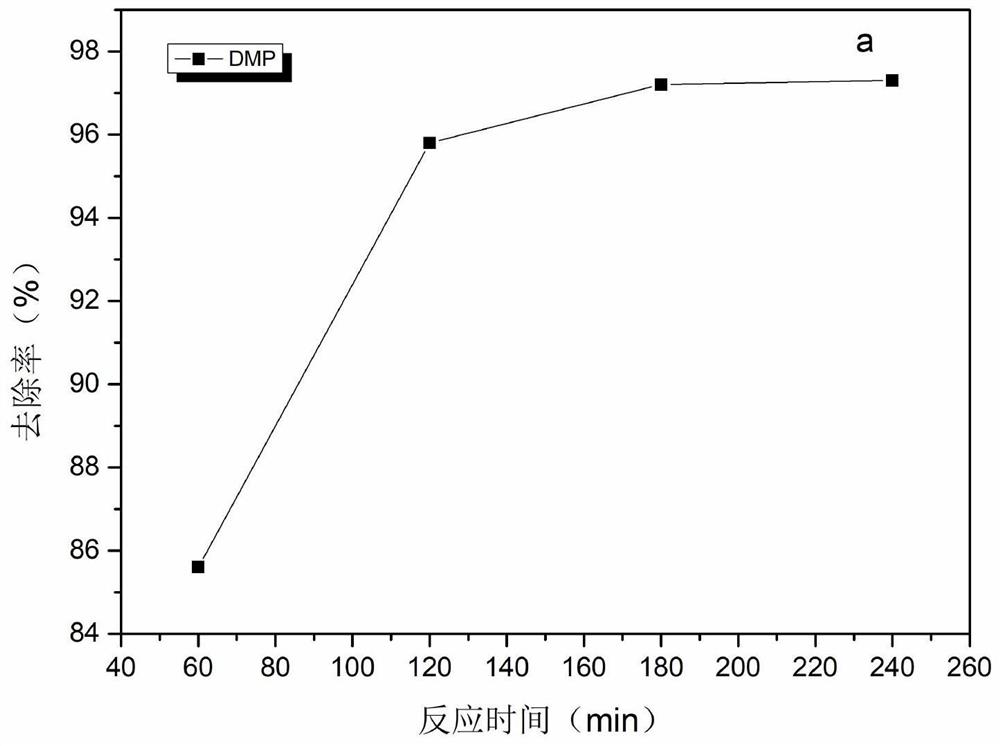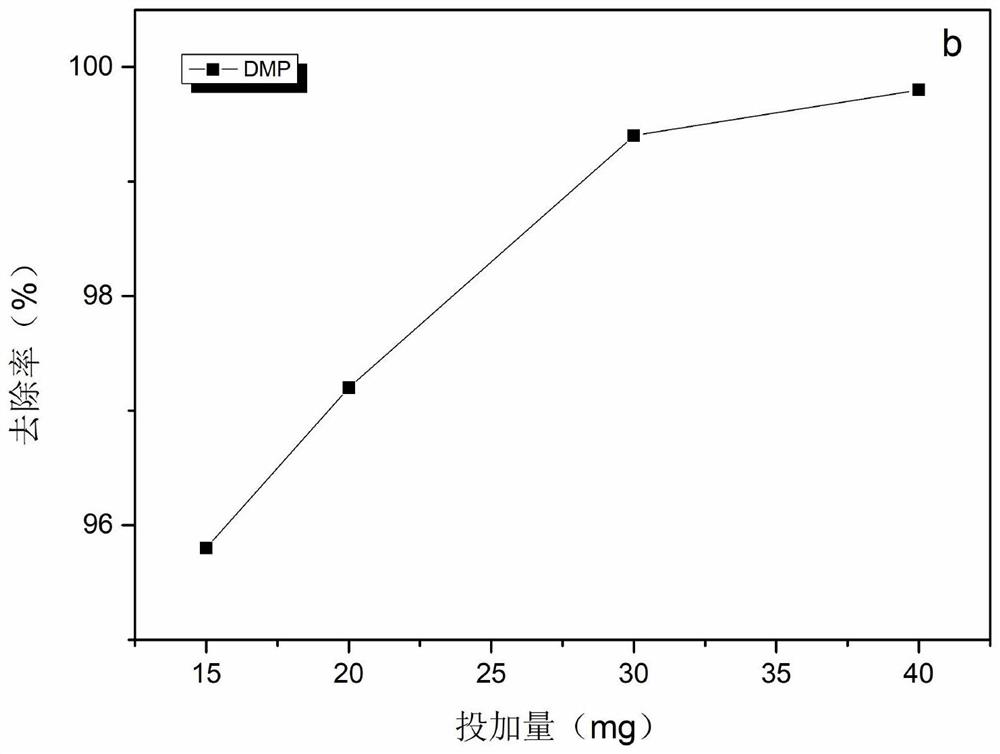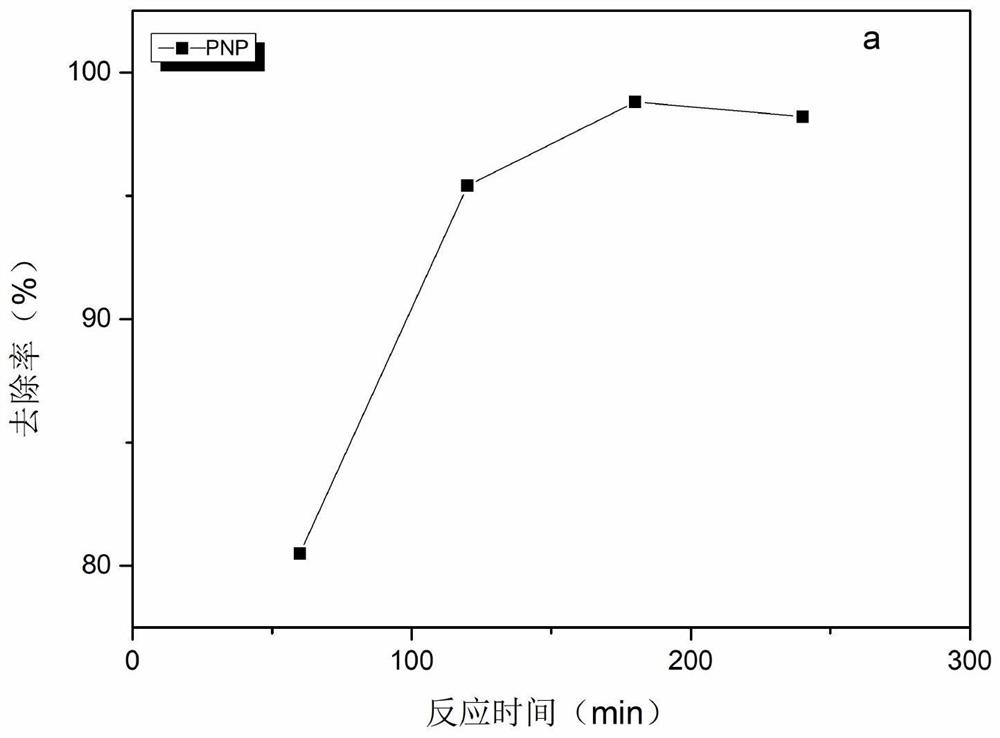Preparation method and application of cyanobacteria modified charcoal with high adsorption efficiency
A technology of biochar and high adsorption, applied in chemical instruments and methods, adsorption water/sewage treatment, restoration of contaminated soil, etc., can solve problems such as imperfect soil remediation technology, reduce migration and transformation risks, increase pore size, Effect of large specific surface area and porosity
- Summary
- Abstract
- Description
- Claims
- Application Information
AI Technical Summary
Problems solved by technology
Method used
Image
Examples
Embodiment 1
[0035] Embodiment 1: 1-1, the preparation of modified cyanobacteria biochar, the specific steps are as follows:
[0036] 1-1-1. Collect the cyanobacteria salvaged from the salvage station, first place them in an oven at 105°C for drying, then crush them with a pulverizer, put them in a quartz boat and put them in a tube furnace, and carry out the process under the condition of nitrogen protection. Carbonization treatment. The heating rate is required to be 5°C / min, the nitrogen flow rate is 50mL / min, the heating temperature is raised from room temperature to 300°C, kept for 1 hour and then cooled to room temperature, the obtained carbon material is marked as ZC300.
[0037] 1-1-2. First, the carbon material ZC300 is further pulverized by a pulverizer, and passed through a 100-mesh sieve. Then the undersize and KOH were mixed according to the mass ratio of 1:2, and deionized water was added to make the KOH concentration at 20%. Then the mixture was dried in an oven at 80°C, t...
Embodiment 2
[0047] 2-1. The preparation of modified cyanobacteria biochar, the specific steps are as follows:
[0048] 2-1-1. Place the collected cyanobacteria in a freeze dryer for freeze-drying, pass through a 100-mesh sieve after pulverization, and put them into a tube furnace for carbonization. The heating rate is 5°C / min, and the nitrogen flow rate is 0.5L / min, the temperature rose from room temperature to 300°C, kept for 2 hours, and then cooled to room temperature, and the obtained carbon material was marked as ZC300.
[0049] 2-1-2. First add KOH to the carbon material ZC300 according to the mass ratio of 1:3 and mix evenly, then add deionized water to make the KOH concentration at 30%. The mixture was dried in an oven at 80°C, and then carbonized in a tube furnace. The temperature was raised to 700°C, kept for 3 hours, and cooled to room temperature. The obtained carbon material was marked as KOH-ZC700.
[0050] 2-1-3. Add 40% HCl to the above-mentioned cooled carbon material, ...
Embodiment 3
[0056] 3-1. The preparation of modified cyanobacteria biochar, the specific steps are as follows:
[0057] 3-1-1. Collect the cyanobacteria and dry them in an oven at 105°C, then crush them with a crusher and put them into a tube furnace for carbonization. The heating rate is 5°C / min, and the nitrogen flow rate is 80mL / min. The temperature was raised from room temperature to 300°C and kept for 1.5h, and the resulting carbon material was marked as ZC300.
[0058] 3-1-2. Crush the cooled ZC300 and pass it through a 100-mesh sieve. Add KOH and mix evenly according to the mass ratio of 1:2.5. Add deionized water to make the KOH concentration at 30%. Dry in an oven at 90°C, and then place Carbonize in a tube furnace, raise the temperature to 700°C, keep it for 2.5 hours, and cool to room temperature. The obtained carbon material is marked as KOH-ZC700.
[0059] 3-1-3. Add 30% HNO3 into the above-mentioned cooled KOH-ZC700, shake on the shaker for 2.5 hours, the shaker conditions a...
PUM
 Login to View More
Login to View More Abstract
Description
Claims
Application Information
 Login to View More
Login to View More - Generate Ideas
- Intellectual Property
- Life Sciences
- Materials
- Tech Scout
- Unparalleled Data Quality
- Higher Quality Content
- 60% Fewer Hallucinations
Browse by: Latest US Patents, China's latest patents, Technical Efficacy Thesaurus, Application Domain, Technology Topic, Popular Technical Reports.
© 2025 PatSnap. All rights reserved.Legal|Privacy policy|Modern Slavery Act Transparency Statement|Sitemap|About US| Contact US: help@patsnap.com



